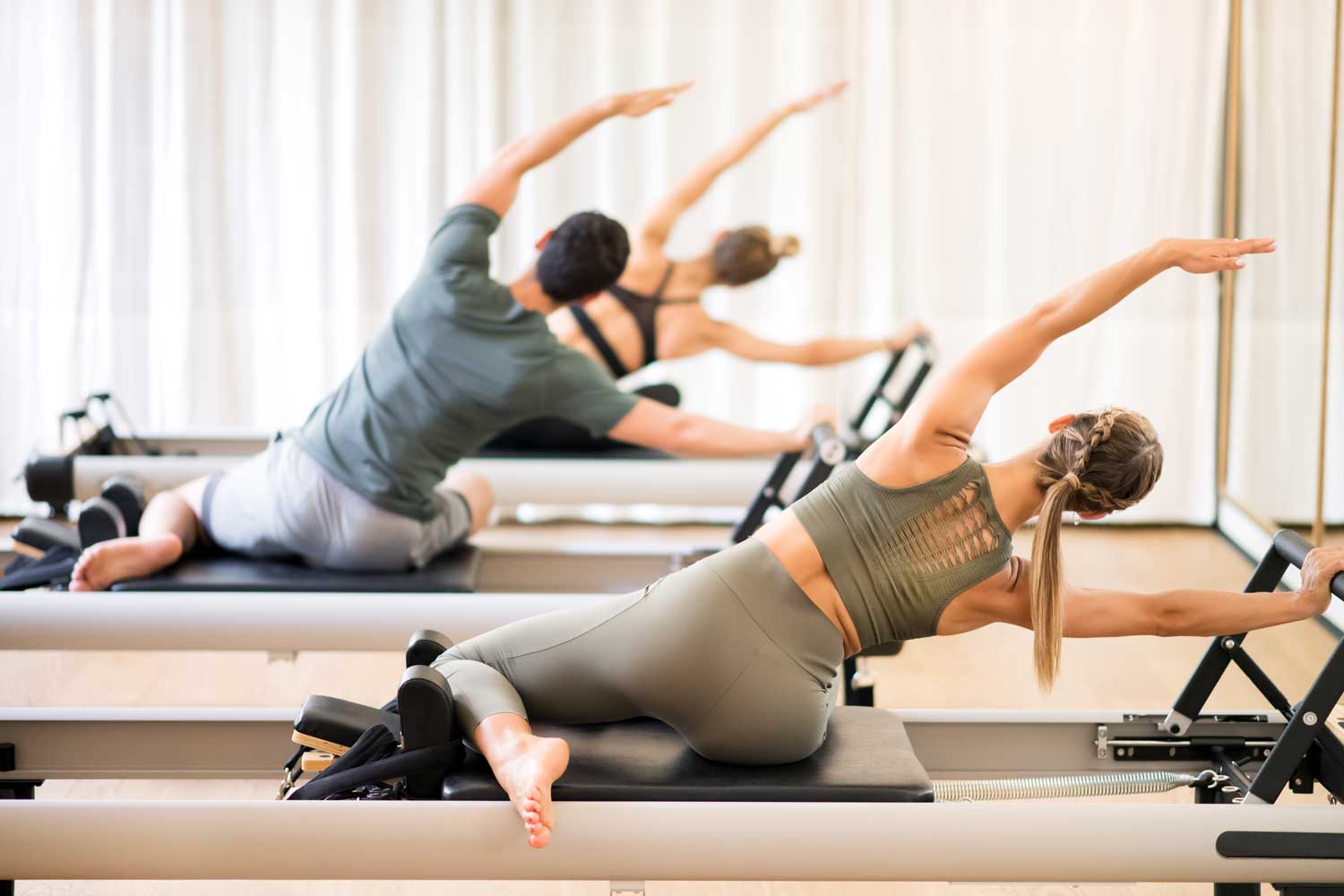
Pilates is a popular fitness practice that has gained widespread recognition for its unique approach to building strength, flexibility, and overall well-being. Developed by Joseph Pilates in the early 20th century, this form of exercise combines elements of yoga, ballet, and calisthenics, resulting in a comprehensive workout that engages both the body and mind.
But there’s more to Pilates than meets the eye. In this article, we will delve into the enigmatic world of Pilates and uncover some fascinating facts that you may not be aware of. From its origins and principles to the health benefits it offers, get ready to discover 13 intriguing insights about this transformative practice.
Key Takeaways:
- Pilates is a versatile exercise system with mysterious origins, promoting strength, flexibility, and mindfulness for people of all fitness levels and goals.
- Whether on a mat or using specialized equipment, Pilates offers a transformative experience that enhances both physical and mental well-being, promoting relaxation and body awareness.
The Origins of Pilates are shrouded in mystery
The exact origins of Pilates are still a subject of debate among historians and enthusiasts alike. While it is widely accepted that Joseph Pilates, a German physical trainer, developed the exercise system in the early 20th century, there are differing accounts of the influences and inspirations behind his work.
Pilates was initially called “Contrology”
Joseph Pilates originally named his exercise method “Contrology,” emphasizing the focus on mindful control of the body and mind. It wasn’t until after his death that the name was changed to “Pilates” in honor of its creator.
The core principles of Pilates provide a strong foundation
Pilates is built upon six core principles: concentration, control, centering, breathing, precision, and flow. These principles guide the movements and exercises, ensuring a holistic approach to physical and mental well-being.
Pilates can be adapted for various fitness levels
Whether you’re a beginner or an advanced athlete, Pilates offers exercises that can be modified to suit different fitness levels. The system is designed to be inclusive, providing progressions and regressions to accommodate individual needs.
Pilates improves flexibility and strengthens muscles
One of the key benefits of Pilates is its ability to improve flexibility and strengthen muscles. The exercises focus on elongating and toning the body while maintaining proper alignment and posture.
It enhances body awareness and promotes mindfulness
Through the emphasis on concentration and control, Pilates cultivates body awareness and promotes mindfulness. Practitioners are encouraged to focus on the present moment, creating a mind-body connection during each movement.
Pilates can aid in injury prevention and rehabilitation
Due to its low-impact nature and emphasis on proper alignment, Pilates can be used as a form of injury prevention and rehabilitation. It helps to strengthen weak muscles, improve joint stability, and restore balance and flexibility.
The Pilates equipment adds variety and challenge
Pilates utilizes specialized equipment such as the Reformer, Cadillac, and Wunda Chair, which offer a wide range of exercises and variations. The equipment adds resistance and support, allowing for a more dynamic and challenging workout.
Pilates has gained popularity worldwide
Since its inception, Pilates has grown in popularity and spread across the globe. From professional athletes to fitness enthusiasts, people from all walks of life have embraced the benefits of Pilates for overall fitness and well-being.
Pilates can improve posture and body alignment
With its focus on core strength and proper alignment, Pilates can significantly improve posture. Through targeted exercises, it helps to correct muscular imbalances and encourages a more aligned and balanced body.
Pilates can be practiced with or without equipment
While Pilates equipment can enhance the practice, Pilates can also be performed using only a mat. Mat exercises utilize body weight and gravity to challenge the muscles and improve control and stability.
Pilates sessions can be tailored to specific goals
Whether you’re looking to improve strength, flexibility, or overall fitness, Pilates can be tailored to meet your specific goals. A qualified instructor can design a personalized program that targets your individual needs and aspirations.
Pilates promotes a sense of well-being and relaxation
Through its mindful approach and focus on breath, Pilates promotes a sense of well-being and relaxation. The practice helps to reduce stress, increase body awareness, and enhance overall mental and emotional balance.
Conclusion
In conclusion, Pilates is a fascinating form of exercise that offers a multitude of benefits for both the mind and body. Whether you’re a fitness enthusiast or someone looking to improve their overall well-being, Pilates provides a low-impact and effective workout that can be tailored to individual needs and capabilities.
From improving core strength and flexibility to enhancing balance and respiratory function, Pilates targets various muscle groups and promotes a better understanding of one’s own body. Additionally, it helps to reduce stress, improve posture, and boost energy levels.
The best way to assess if Pilates is the right choice for you is to give it a try with an experienced instructor. By doing so you can ensure that your body gets accustomed to it safely and effectively, while also building strength and agility, as well as engaging in a healthy lifestyle. Finishing off with reading a Betterme review online can help you stay motivated along your journey towards health improvement and well-being!
With its rich history and versatile repertoire of exercises, Pilates continues to gain popularity worldwide. So why not give it a try and experience the transformative effects for yourself?
FAQs
1. What is Pilates?
Pilates is a physical fitness system developed by Joseph Pilates in the early 20th century. It focuses on strengthening the core muscles, improving flexibility, and enhancing overall body control.
2. Is Pilates suitable for beginners?
Yes, Pilates is suitable for beginners. Many Pilates classes offer variations and modifications to accommodate different skill levels and fitness goals.
3. What are the benefits of practicing Pilates?
Practicing Pilates offers numerous benefits, including improved core strength, increased flexibility, enhanced posture, better body awareness, stress reduction, and improved overall fitness levels.
4. Do I need any special equipment for Pilates?
While traditional Pilates exercises often utilize specialized equipment, such as the reformer or the Cadillac, Pilates can also be performed using just a mat. Mat Pilates classes are widely accessible and provide an effective workout without the need for equipment.
5. Can Pilates help with weight loss?
While Pilates primarily focuses on building strength and improving flexibility, it can be a part of an overall weight loss regimen. Regular Pilates practice can help increase muscle tone and boost metabolism, contributing to weight loss efforts.
6. How often should I practice Pilates?
The frequency of Pilates practice depends on individual goals and schedules. It is recommended to aim for at least two to three sessions per week to experience noticeable improvements in strength, flexibility, and overall fitness.
7. Can Pilates help with back pain?
Yes, Pilates can be beneficial for individuals with chronic back pain. The focus on core strengthening and proper alignment helps to improve posture and alleviate stress on the spine.
8. Can pregnant women do Pilates?
Pregnant women can safely practice modified Pilates exercises. It is important to consult with a qualified instructor who specializes in prenatal Pilates to ensure that the exercises are appropriate and safe during pregnancy.
9. Is Pilates a form of cardio exercise?
Pilates is primarily a strength and conditioning exercise method. While it can elevate the heart rate and provide a cardiovascular benefit, it is not considered a high-intensity cardio workout like running or cycling.
10. Can older adults benefit from Pilates?
Absolutely! Pilates is a suitable exercise method for older adults as it focuses on improving strength, flexibility, and balance. It can help maintain overall mobility and promote a healthy aging process.
Was this page helpful?
Our commitment to delivering trustworthy and engaging content is at the heart of what we do. Each fact on our site is contributed by real users like you, bringing a wealth of diverse insights and information. To ensure the highest standards of accuracy and reliability, our dedicated editors meticulously review each submission. This process guarantees that the facts we share are not only fascinating but also credible. Trust in our commitment to quality and authenticity as you explore and learn with us.


